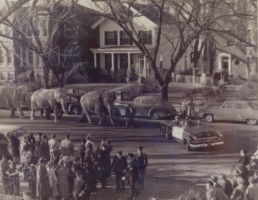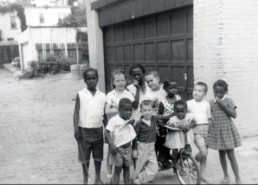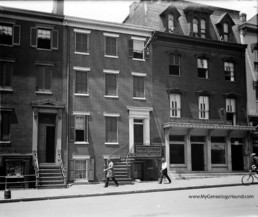About 1948. Circus elephants
Circus elephants heading east in the 600 block of North Carolina Avenue SE, are turning into old stables (behind Eastern Market) where they presumably will stay during the run of the circus. About 1948.
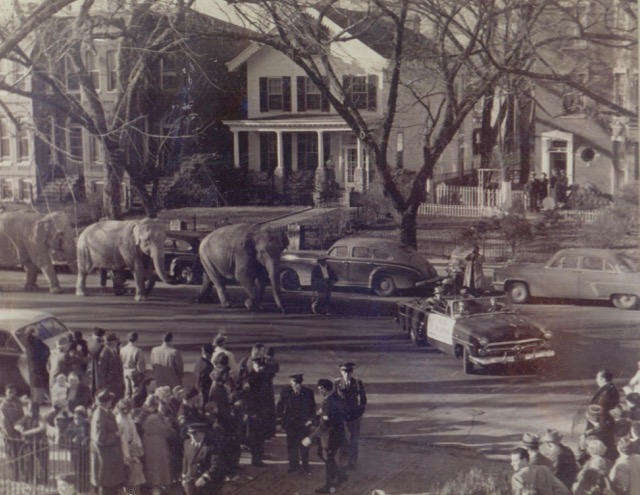
The stables belonged to the fire station in that block (now the site of the Rumsey Aquatic Center) and had previously been used to house fire horses. Watching the annual show are fIremen from the station and other neighbors. The Hoffmann family home at 616 North Carolina Avenue SE is across the street, with the peaked roof and front porch.
The Fifth Street "alley gang" neighbors
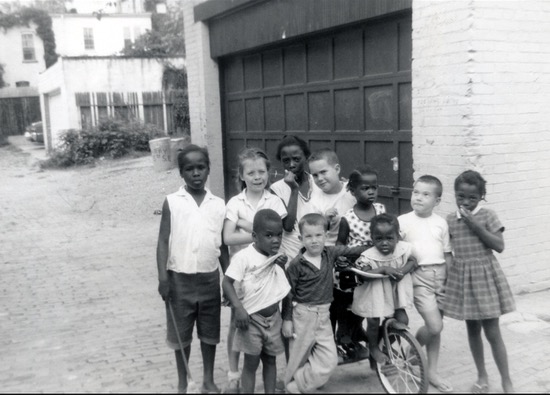
The Fifth Street "alley gang" neighbors, in the alley adjoining the 100 block of Fifth Street SE; about 1965. Front: Carlton Diggs, Chris Driscoll, Angie Diggs. Back: Colleen Diggs, Patty [last name?], Janice Diggs, Steve Driscoll, Cheryl Diggs, David Driscoll, Lolo Diggs.
Petersen House
The Petersen House (House Where Lincoln Died) at 516 10th street was the home of William and Anna Petersen. On the night of April 14, 1865 the mortally wounded president was carried to a back bedroom in this house. The Petersen family aided as they could, although on this night their home was no longer their own. Over 90 people would come and go through the house to pay their last respects to the dying president. Soldiers stood guard at the front door and were posted on the roof to keep the growing crowds at bay. While doctors cared for the president the Petersen family and some of the boarders spent the night in the basement. At 7:22 am, April 15, 1865, Abraham Lincoln died in the back bedroom of this humble house.
Touring the Petersen House: The three rooms in the house today are furnished in 1865 period pieces, none of the furniture is original to the house. Visitors use the same ticket that they used to tour Ford's Theatre. The House is open 9:30 am to 5:30 pm daily. Visitors will now enter The Center for Education and Leadership from the back porch.
Housed in a building directly across the street from Ford's Theatre and acquired by the Ford's Theatre Society in 2007, the Center features two floors of permanent exhibits addressing the immediate aftermath of Lincoln's death and the evolution of Lincoln's legacy; a Leadership Gallery floor to be used for rotating exhibits, lecture and reception space; and two floors of education studios to house pre- and post-visit workshops, after-school programs and teacher professional development.
